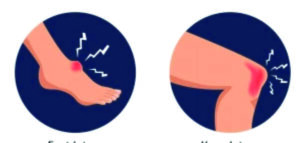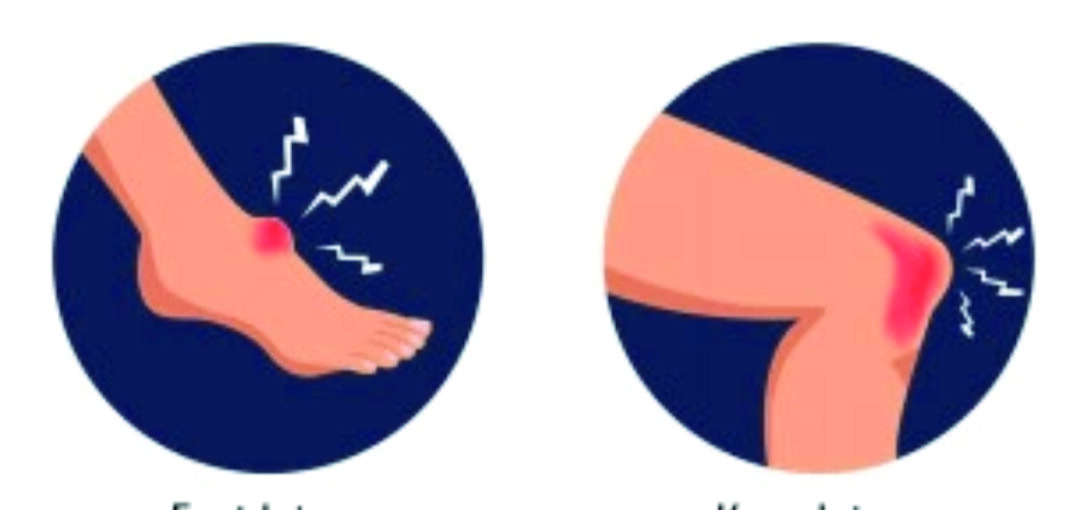MORPHOLOGY OF CELL INJURY | ADAPTIVE CHANGES |
Cell adaptation within limits: Most cells have the ability to adapt to changes in their environment by altering their morphology of cell injury, pattern of growth and metabolic activity. These adaptive responses may be part of the normal physiology of a cell or tissue, or they may represent an attempt to limit the harmful effects of a pathological stress. Several basic patterns of macroscopic change have been described and are detailed below. It should be pointed out that physiologic signals such as hormonal stimuli can also cause tissues to change with similar patterns. Consequently, the adaptive mechanisms described below can be considered basic patterns of macroscopic change which can be induced
by both pathological injury and in certain cases physiologic stimuli. Common examples include: atrophy, hypertrophy, hyperplasia, metaplasia and dysplasia.
- a. Hypertrophy: Hypertrophy refers to an increase in the physical size of cells. When hypertrophy occurs simultaneously in a population of adjacent cells this can lead to increased tissue or organ size. In certain clinical settings, the word “Hypertrophy” is loosely used in reference to any increase in tissue or organ size even if the increase is due to cellular Hyperplasia. Such conflation of hypertrophy and hyperplasia is difficult to avoid since in most cases hyperplasia and hypertrophy occur concurrently. The few cases in which an increased organ size occurs purely due to cellular hypertrophy (and includes no component of hyperplasia) is in expansion of skeletal muscle and the myocardium whose cells cannot divide. In general, hypertrophy is due to increased functional demand on a tissue or due to specific hormonal stimulation.
- b. Hyperplasia: Hyperplasia refers to an increase in the number of cells within a tissue due to mitosis. It is important to note that hyperplastic cells still maintain strict regulatory control of their cell cycle. Consequently, when the stimuli which induce hyperplasia are removed, cells will terminate their divisions. In contrast, cell division in the absence of stimuli is considered as neoplasia. Hyperplasia can be induced by specific hormonal stimuli, increased functional demand on the tissue or by injury to the tissue. Due to tissue injury, surviving cells often enter mitosis to replace those lost due to cell death. Use the search function for specific examples.
- c. Atrophy: Atrophy refers to a decrease in the physical size of cells. When atrophy occurs simultaneously in a population of adjacent cells this can lead to decreased tissue or organ size. In certain clinical settings, the word “Atrophy” is loosely used in reference to any decrease in tissue or organ size even if the decrease is due to reduction in cell number. Such usage is difficult to avoid since in most cases reduction in cell size and number frequently occur together. Atrophy can occur due to reduced functional demand or reduced nervous or hormonal stimulation of the tissue. Long-term declines in blood supply can also lead to atrophic regression of perfused tissues.
- d. Metaplasia: Metaplasia refers to a reversible histological replacement of one differentiated cell type with another. Although by definition metaplasia is a reversible adaptation, it frequently precedes and may represent the initial steps of malignant transformation. Metaplasia is frequently induced by chronic cellular injury and represents an adaptation in which a tissue replaces a sensitive cell type with one better able to resist the injury. e. Dysplasia: The cells look abnormal under a microscope but are not cancer cells. Hyperplasia and dysplasia may or may not become cancer. Dysplasia refers to an
abnormal and potentially reversible process where there is disordered growth and
maturation of cells and the tissues and organs. The number of adult and mature
cells decreases while the number of immature cells increases. The microscopic changes which occur in reversible cell injury are cellular swelling (organelle changes) and
fatty changes.
Frequently Asked Questions🍀
1. What is cell injury?
Cell injury refers to a state in which cells are exposed to stress or damage beyond their capacity to maintain normal function, leading to structural and functional changes that may be reversible or irreversible.
2. What are the major morphological changes observed during cell injury?
Morphological changes in cell injury include alterations in cell shape, loss of plasma membrane integrity, swelling of organelles (especially mitochondria), cytoplasmic vacuolization, and nuclear changes.
3. What distinguishes reversible from irreversible cell injury?
Reversible injury is characterized by cellular changes that can be restored if the damaging stimulus is removed, whereas irreversible injury leads to permanent damage and cell death, often via apoptosis or necrosis.
4. How does cellular swelling occur and what does it indicate?
Cellular swelling happens due to the failure of ATP-dependent ion pumps, which results in an influx of sodium and water into the cell, serving as an early indicator of reversible cell injury.
5. What role do mitochondria play in cell injury?
Mitochondria are essential for ATP production. During cell injury, mitochondrial swelling and dysfunction compromise energy production, contributing to further cellular damage.
6. How does plasma membrane integrity change during cell injury?
During cell injury, the plasma membrane may exhibit blebbing, loss of lipid asymmetry, and increased permeability, which can lead to the leakage of cellular contents and ultimately cell death.
7. What are adaptive changes in cells in response to injury?
Adaptive changes include mechanisms such as hypertrophy, hyperplasia, atrophy, and metaplasia, which enable cells to adjust to increased demands or stress to maintain functionality.
8. What is hypertrophy and how does it relate to cellular adaptation?
Hypertrophy is the enlargement of cells due to increased workload or stimulation, serving as an adaptive mechanism to enhance cell function without increasing the cell number.
9. What is hyperplasia in the context of cell adaptation?
Hyperplasia is the increase in the number of cells through proliferation, often in response to hormonal stimulation or increased functional demand.
10. What is metaplasia and how does it differ from dysplasia?
Metaplasia is the reversible transformation of one mature cell type into another as an adaptive response to stress, while dysplasia involves disordered cell growth that can be a precursor to cancer.
11. How is atrophy defined in cellular adaptation?
Atrophy is the reduction in cell size and function, typically due to decreased workload, diminished blood supply, or loss of trophic signals, and serves as an adaptive response to adverse conditions.
12. What is fatty change (steatosis) and how is it related to cell injury?
Fatty change is the abnormal accumulation of lipid droplets within cells, especially in the liver, often resulting from toxic injury or metabolic stress.
13. How does cell injury trigger an inflammatory response?
Injured cells release intracellular components called damage-associated molecular patterns (DAMPs) that activate the immune system, triggering inflammation to clear debris and initiate repair.
14. What changes occur in the endoplasmic reticulum during cell injury?
During cell injury, the endoplasmic reticulum can become dilated or fragmented, which impairs protein synthesis and folding, further exacerbating cellular stress.
15. What are the early ultrastructural changes seen in reversible cell injury?
Early ultrastructural changes include mitochondrial swelling, dilation of the endoplasmic reticulum, and plasma membrane blebbing, which may be reversed if the injury is promptly addressed.
16. How does protein misfolding occur in cell injury and what are its consequences?
Protein misfolding can occur due to stressors such as heat shock or oxidative damage, leading to the accumulation of abnormal proteins, activation of the unfolded protein response, and possibly cell death if unresolved.
17. What nuclear changes are associated with cell injury?
Nuclear changes in cell injury include pyknosis (nuclear shrinkage), karyorrhexis (fragmentation), and karyolysis (dissolution), which help distinguish reversible from irreversible damage.
18. What role do stress proteins and heat shock proteins play in cell adaptation?
Stress proteins, including heat shock proteins, act as molecular chaperones that assist in refolding damaged proteins and preventing aggregation, thereby supporting cell survival under stress.
19. Which molecular pathways are involved in the process of cell injury?
Key pathways include those mediating oxidative stress, mitochondrial dysfunction, calcium overload, inflammatory signaling, and the activation of apoptotic and necrotic mechanisms.
20. How is cellular swelling linked to ionic imbalances in injured cells?
Ionic imbalances occur when ATP-dependent ion pumps fail, leading to an accumulation of sodium and water within the cell, which results in cellular and organelle swelling.
21. Can cellular swelling be reversed, and under what conditions?
Yes, cellular swelling is generally reversible if the underlying cause, such as ischemia or toxin exposure, is promptly removed before irreversible damage occurs.
22. How do energy depletion and loss of ATP contribute to cell injury?
Loss of ATP impairs the function of ATP-dependent ion pumps, resulting in ionic imbalances and cellular swelling, which disrupt essential cellular processes and contribute to cell injury.
23. What are the clinical implications of recognizing morphological changes in cell injury?
Identifying morphological changes in cell injury is crucial for diagnosing the severity of the injury, guiding treatment strategies, and preventing the progression to irreversible cell death.
Related Links : Definition Of Pathophysiology | What’s Exactly Is Pathophysiology Means ?
Positive Feedback Mechanism Vs Negative Feedback Mechanism| Adaptation | Homeostasis
CELL INJURY | Mechanism of cell injury | Pathogenesis| Morphology
CELLULAR SWELLING

The plasma membrane forms a barrier against excessive amounts of Na+ within the extracellular fluid from entering the cell. However, the plasma membrane is slightly “leaky” to Na+ , allowing minimal amounts of Na+ to gradually move into the cell. To compensate this, there is a perpetually active Na+ /K+ATPase pump, which move Na+ out of the cell constantly, in exchange for K+ into the cell. The normal functioning of these pumps is hampered due to depletion of ATP which leads to accumulation of Na+ intracellularly creating osmotic pressure which causes cellular swelling. Fatty Change (Steatosis): This steatosis is caused in hypoxic, toxic and metabolic injuries and is related to a dysfunction in the cell’s regulation of synthesis and elimination of triglycerides. Excess lipids accumulate within the cells, usually parenchymal cells that form numerous vacuoles that displace the cytoplasm. If these vesicles are large enough to displace and distort the nucleus ,it is referred to as macrovesicular steatosis.
Related Feed🌽
Unraveling the Mystery🌎: Why Your Stomach Hurts When You Wake Up🤔?

